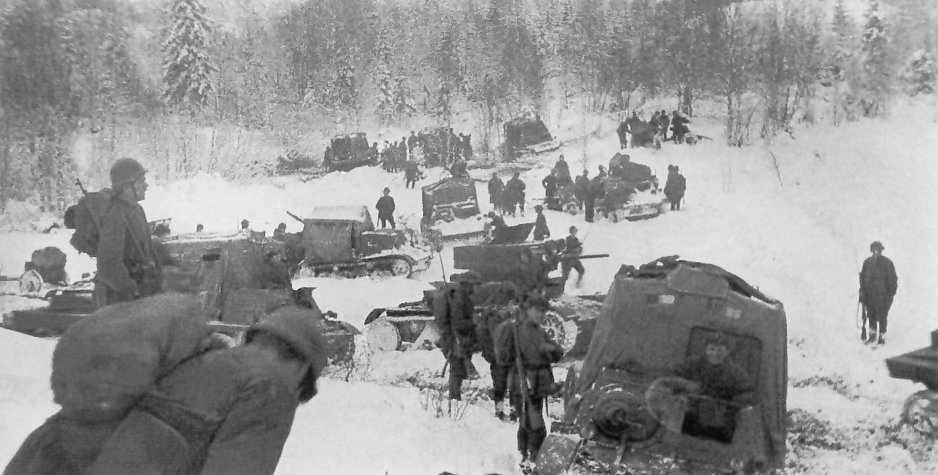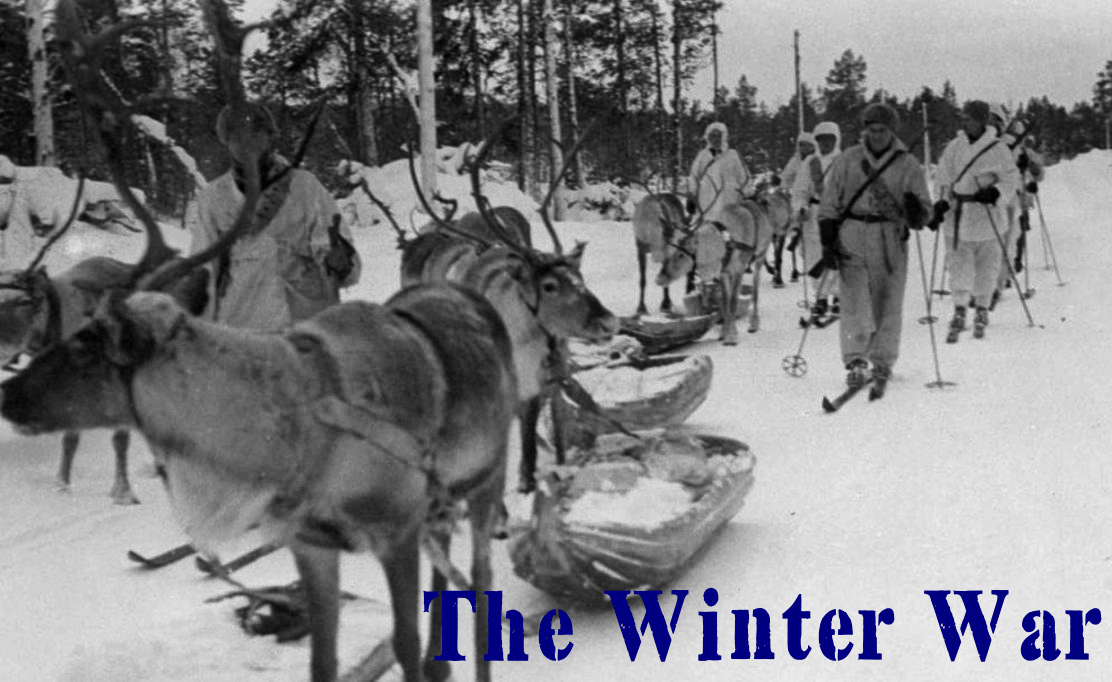The Winter War
A direct result of the Molotov-Ribbentrop Pact, in which the Soviets “got” Finland. This resulted in a 3 ½ month war between Russia and a not-so-happy Finland.
After the fall of Poland in September, “Russia sought to extend its influence over the Baltic” (Source). Then, on October 5th, “Russia invited Finnish representatives to Moscow to discuss political discussions” (Source). On the 12th, JK Paasikivi went to meet Stalin and Molotov to “discuss” the Finnish boarder.
“Stalin wanted Finnish islands in the Gulf of Finland, including Suursaari Island, handed over to Russia; he wanted to lease Hanko as a military base and to establish a garrison of 5,000 men there and he demanded more Finnish land on the Russian border to be ceded to Russia. In return, Stalin offered Finland land in Soviet Karelia and the right for Finland to fortify the Aaland Islands. Stalin couched all his land requirements in terms of defending parts of Russia, be it Leningrad or Murmansk, from attack” (Source).
Paasikivi took these terms back to his people, but after many decades of tensions between the two countries, Finland was not eager to once again be part of the Russian Empire. At the same time, Stalin didn’t exactly trust Finland, either. He was afraid that they might be all-too eager to allow their “land to be used as a base by invading forces for an attack on Russia” (Source). And who could blame them?
Predictably, the Finnish did turn down Stalin. However, there were two men who thought that giving Russia some of their Gulf Islands as a way to “pay off” Russia in the event of the inevitable war – their fear that they’d have to fight Russia on their own.
And they did.
Because, inevitably, Germany forces “urged” Finland to give the land.
Problematically, Finland could only muster a small army, despite its peacetime conscripts and their small reserves. But this did little to boost their professional army, and they were no match for the Red Army.
Not only could they not match the Red Army in its numbers, but the Finnish Army was also woefully lacking in the important necessities such as equipment, uniforms, and artillery. For example, they only owned 112 anti-tank guns. Additionally, they had no convenient ways of producing more.
Likewise, the Navy was minuscule with only some 100 planes, most of which were not even flyable. And neither branch had much experience in large-scale maneuvers.
The only area that they could possibly beat the Red Army was in the knowledge of their own land. “Finnish troops were trained to use their own terrain to their advantage” (Source). This included everything from the forests to the snow-covered territories.
[Below: Russian T-26 light tanks and T-20 Komsomolets armored tractors advancing into Finland]

On the other side, predictably, the Red Army was more than prepared for battle. Even with the large numbers in Poland, Stalin was still able to send 45 divisions to Finland! With each division containing 18,000 men, the roughly 810,000 sent equalled “nearly 25% of the whole of Finland’s population” (Source). In fact, Russians were able to supply 1,200,000 men, 1500 tanks, and 3000 planes.
Outside of terrain, the Red Army had only one other major weakness: A chair of command so complex that it brought many delays in decision making.
Truthfully, though they had more men and more supplies, the Red Army was not actually prepared for the particularly severe winter in which the Winter War took place. Additionally, most of the 600 miles of boarders were impassable, giving Finland a pretty good idea of the route the Soviets would take.
“Led by Marshal Carl Gustaf Mannerheim, they hunkered down behind a network of trenches, concrete bunkers and field fortifications on the Karelian Isthmus and beat back repeated Soviet tank assaults. Elsewhere on the frontier, Finnish ski troops used the rugged landscape to conduct hit-and-run attacks on isolated Soviet units. Their guerilla tactics were only aided by the freezing Finnish winter, which bogged the Soviets down and made their soldiers easy to spot against snowy terrain” (Source).
Unfortunately, though, in February 1940, the Soviets were able to come through with “massive artillery bombardments to breach the Mannerheim Line” (Source). This allowed them to march northward to Viipuri.
The Finnish “troops were ultimately no match for the sheer immensity for the Red Army” (Source). The Finnish, backing aid from Britain and France, were exhausted and lacking ammunition.
On March 12, 1940, the Finnish agreed to the treaty – The Treaty of Moscow. With it meant ceding 11% of their territory to the Soviets.
And later, as Stalin had predicted, in June 1941, the Finnish allowed “German troops to transit through the country after the outbreak of war between Germany and the Soviet Union,” undertaking the War of the Continuation (Source).
[Below: Finnish soldiers and reindeer]


